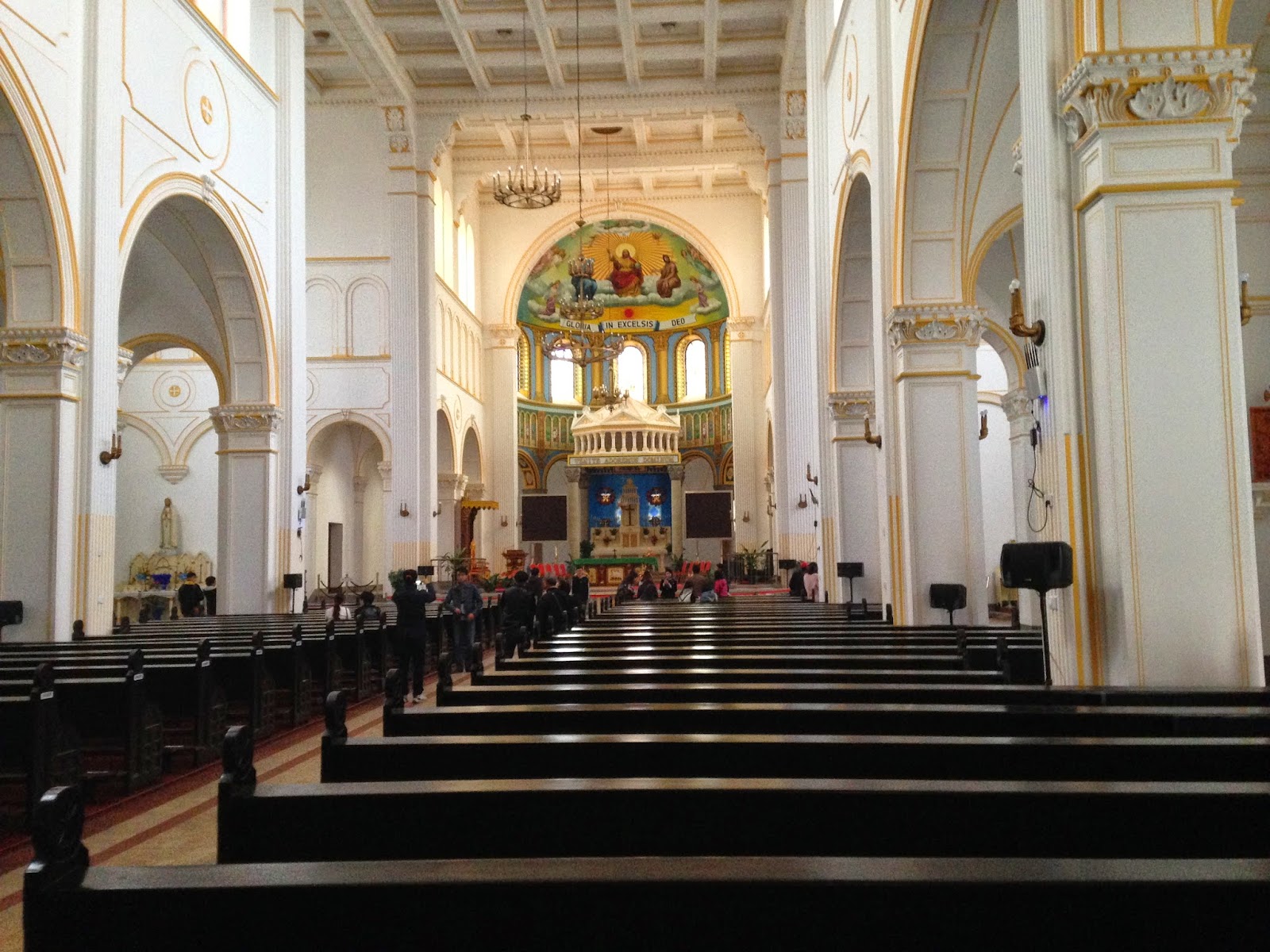Built on a hilltop by the German Catholic Divine World Missionaries (Societas Verbi Divini, SVD) in 1934. Father Alfred Fräbel designed the neo-Romanesque structure. Construction was halted in 1933 when Hitler prohibited transfer of money overseas, although Qingdao was then under Chinese control (ROC).
St. Michael's Cathedral has survived two World Wars and a Cultural Revolution with only minimal damage. In 1942, during the Japanese occupation of Qingdao a banner was hung above the main entrance that read “Under Management of the Japanese Army”. However, during Mao's Cultural Revolution (1966–1976) members of the Red Army defaced parts of Bishop Georg Weig's tombstone that was set into a wall in the north transept as well as cutting the two crosses off the top of the steeples. St. Michael's Cathedral 2400 pipe organ, one of the two largest in Asia, was also destroyed.
The Chinese government subsequently repudiated the Cultural Revolution and funded the cathedral's restoration efforts. New crosses were manufactured for the cathedral's restoration, and after several years of repair, St. Michael's Cathedral was re-opened in April 1981. In May 1999 the Catholic Protestant Church was opened to the general public, allowing entry when mass or other services are not being held.
The Chinese government subsequently repudiated the Cultural Revolution and funded the cathedral's restoration efforts. New crosses were manufactured for the cathedral's restoration, and after several years of repair, St. Michael's Cathedral was re-opened in April 1981. In May 1999 the Catholic Protestant Church was opened to the general public, allowing entry when mass or other services are not being held.
 |
| adjacent to Square |











No comments:
Post a Comment